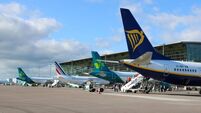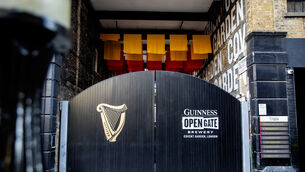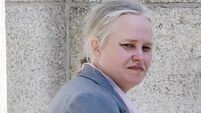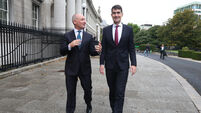Hangover more than cheers for Irish drinks industry
SPIRITS were down, the beer was flat but the wine was fine. What passes for a typical description of an office Christmas party turns out to be an accurate summary of the past year for the Irish drinks industry.
An economic slowdown, extra taxes and higher insurance and staff costs made 2003 more of a hangover than a celebration. Publicans gobbled more painkillers than champagne and complained of a shift away from pubs towards drinking at home. Even the greenhouse effect took a swipe at the industry, with an unusually hot summer hurting alcohol sales, while the Government’s SSIA savings scheme took some unexpected blame for tying up disposable income that would otherwise have made its way across counters.
“Spirits have had an appalling year,” says Rosemary Garth, director of the Irish Spirits Association and associate director of IBEC’s food and drinks division. Our distillers’ glasses looked half empty during the year as sales leaked 20%. The industry blamed a 42% hike in excise duty on shots in December 2002, which added over 4 to the price of a standard bottle and pushed most over the psychological barrier of 20.
IBEC says Irish excise duty levels on spirits are now among the highest in the EU. A bottle of Irish whiskey costs more here than in Spain, even though it costs more to transport a bottle to downtown Malaga than Midleton. A bottle of whiskey now costs in the region of 6 less in Northern Ireland than in the Republic, fuelling a surge in cross-border shopping and causing spirit sales in border regions to plummet.
Irish Distillers, which stocks our drinks cabinets with Jameson and Bushmills whiskeys, also blames the tax hikes and anticipates a “challenging” year in 2004. The company complains that up to 60% of the cost of a standard bottle goes to the Exchequer. At a time when the economy slowed and consumer confidence began to waver, the much talked about “leisure euro”, the industry term for discretionary spending, became scarcer as essential spending on mortgages and cars took precedence. Lower disposable income chasing a higher-priced drink caused fewer glasses and more eyebrows to be raised. Brewers also found 2003 a bitter year as sales of beer and stout continued to decline from the peak levels of 1999 and 2000.
The off-licence trade performed well as the trend towards drinking and entertaining at home continued to grow, a factor which saw an estimated 8% fall in beer sales in pubs.
“I've never seen so much pressure on the licensed trade over the last 15 years,” says Beamish & Crawford managing director Alf Smiddy. He worries about lower disposable income, legislative pressure and the forthcoming smoking ban but remains upbeat for next year. Beamish & Crawford signalled its confidence in the future by investing over 7 million in a new bottling facility in Cork earlier this year.
Mr Smiddy also bucked the trend of cutting back on advertising by increasing his spending on marketing Miller, one of the few success stories in a beer market that may be running out of fizz. “Over the last twelve months, we’ve done quite well,” says Mr Smiddy. “We’ve seen growth across a number of our brands, including Miller and Fosters, while Beamish has maintained its performance in line with the market. Overall we’re slightly outperforming the market,” he says.
Diageo Ireland, which fills glasses with Guinness, Budweiser and Carlsberg, also complained of a difficult year as sales of Guinness fell by 4% and lagers by 6%. It continues to invest in brewing capacity in Dundalk, Co Louth, and Waterford but reported a 9% fall in operating profits earlier this year. The company also suffered from a doubling of the excise duty on its ready-to-drink brands, such as Smirnoff Ice, and saw sales fall 6% in this category.
Heineken Ireland, brewers of Murphy’s stout in Cork, agreed that overall beer and stout sales fell during the year and said the pattern reflected a switch in consumer spending. Falling consumer confidence and lower spending in the key under-30 age group hit sales although its core Heineken brand remained strong.
But viewed through a wine glass, life looked rosy. The growth in wine sales eased off from the double digits the industry has enjoyed since the 1990s, but still turned in a respectable 5% growth during the year.
Wine now accounts for 14% of Irish alcohol sales, having risen steadily from 8% in 1994. “We expect wine sales to grow by at least 5% again next year,” says David Dillon of the Wine Development Board, a body funded by wine merchants and retailers. Volumes have trebled over the last 10 years but Mr Dillon still sees room for growth, with consumption levels per head still lower here than the European average. He too criticises excise levels and says almost 40% of the cost of a standard bottle goes to the Government.















